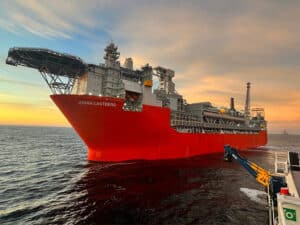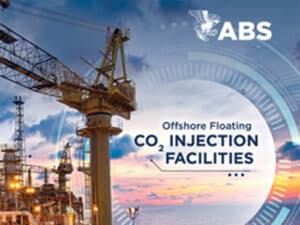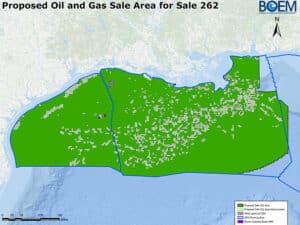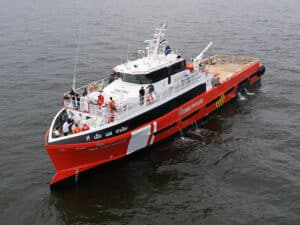
Deepwater blowout exercise to be conducted this summer in GOM
Written by Marine Log Staff MAY 25, 2012—This summer, the Marine Well Containment Company (MWCC), Houston, TX, will conduct a live drill to deploy its new capping stack well control equipment in the Gulf of Mexico as part of an exercise to demonstrate the drilling industry’s ability to respond to a deepwater blowout similar to the Deepwater Horizon incident.
The exercise will be overseen by U.S. Department of Interior’s Bureau of Safety and Environmental Enforcement (BSEE), which tests capping stacks on the surface as part of its overall responsibility to enforce the tougher offshore safety requirements implemented after the Deepwater Horizon explosion and oil spill.
“In the wake of the Deepwater Horizon explosion and oil spill, we undertook the most aggressive and comprehensive reforms to offshore oil and gas oversight in U.S. history, including requiring the industry to have immediate access to equipment and technologies that could stop another blowout,” says Interior Secretary Ken Salazar. “Our safety reforms are designed to reduce the chances that a capping stack would ever be needed again, but one thing Deepwater Horizon taught us is that you must always be ready to respond to the worst case scenario. This exercise is an opportunity to deploy systems, test readiness, and train under real-time conditions.”
BSEE Director James Watson says, “We have tested MWCC and capping stacks repeatedly, but putting them through their paces in the deep waters of the Gulf will give us added confidence that they will be ready to go if needed.”
MWCC is one of two consortia that provide contract access to well containment equipment to oil and gas operators in the Gulf of Mexico. This equipment is required by BSEE for drilling with subsea blowout preventers in deepwater, among other situations.
MAY 25, 2012—This summer, the Marine Well Containment Company (MWCC), Houston, TX, will conduct a live drill to deploy its new capping stack well control equipment in the Gulf of Mexico as part of an exercise to demonstrate the drilling industry’s ability to respond to a deepwater blowout similar to the Deepwater Horizon incident.
The exercise will be overseen by U.S. Department of Interior’s Bureau of Safety and Environmental Enforcement (BSEE), which tests capping stacks on the surface as part of its overall responsibility to enforce the tougher offshore safety requirements implemented after the Deepwater Horizon explosion and oil spill.
“In the wake of the Deepwater Horizon explosion and oil spill, we undertook the most aggressive and comprehensive reforms to offshore oil and gas oversight in U.S. history, including requiring the industry to have immediate access to equipment and technologies that could stop another blowout,” says Interior Secretary Ken Salazar. “Our safety reforms are designed to reduce the chances that a capping stack would ever be needed again, but one thing Deepwater Horizon taught us is that you must always be ready to respond to the worst case scenario. This exercise is an opportunity to deploy systems, test readiness, and train under real-time conditions.”
BSEE Director James Watson says, “We have tested MWCC and capping stacks repeatedly, but putting them through their paces in the deep waters of the Gulf will give us added confidence that they will be ready to go if needed.”
MWCC is one of two consortia that provide contract access to well containment equipment to oil and gas operators in the Gulf of Mexico. This equipment is required by BSEE for drilling with subsea blowout preventers in deepwater, among other situations.
MWCC has 10 member companies: ExxonMobil, Chevron, ConocoPhillips, Shell, BP, Apache, Anadarko, BHP Billiton, Statoil and Hess. Nearly 70 percent of wells drilled between 2007 and 2009 were operated by MWCC member companies. Each member company has an equal share and an equal vote, and each contributes to the company’s overall operating costs as well as the overall cost of the expanded containment system, which is more than $1 billion.
The other consortium, the Helix Well Containment Group, Houston, TX, which has 24 member companies, will complete a similar deployment exercise in the future, says the Department of Interior. The demonstration will involve the field deployment and testing of a capping stack as part of a larger scenario that will also test an operator’s ability to obtain and schedule the deployment of the supporting systems necessary for successful containment – including debris removal equipment and oil collection devices, such as top hats. The capping stack will be lowered to the seabed by wire, a technique that offers the potential to be significantly faster than the deployment via pipe that occurred during the Deepwater Horizon response. As part of the exercise, BSEE will also analyze the results from tests conducted on the sea floor.





Leave a Reply
You must be logged in to post a comment.